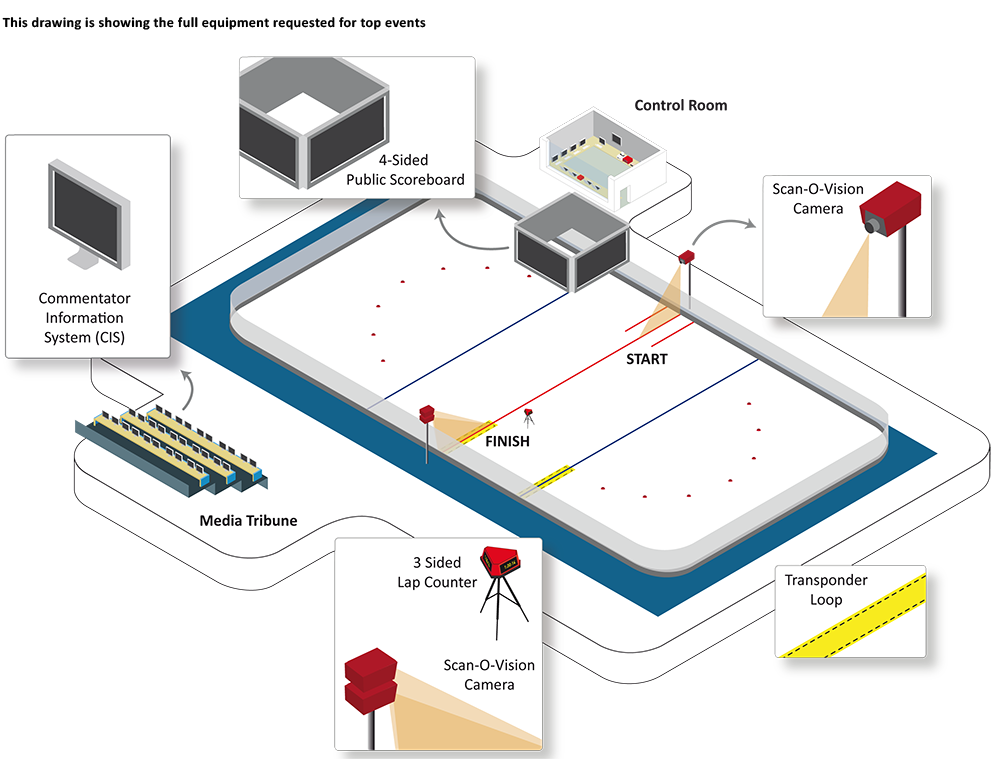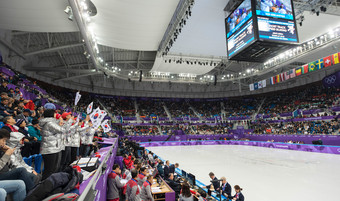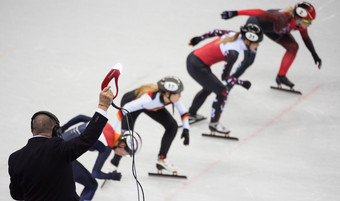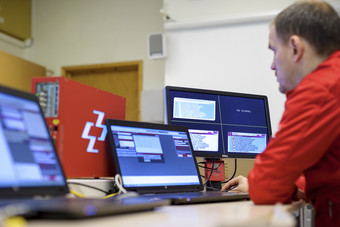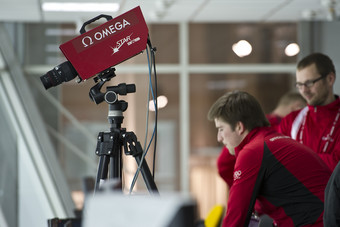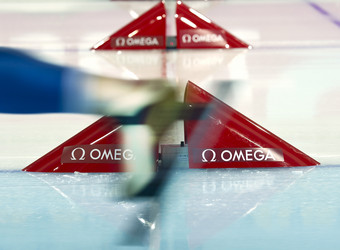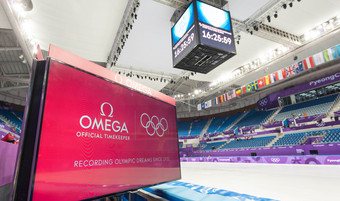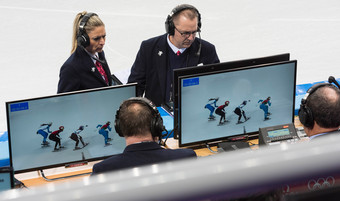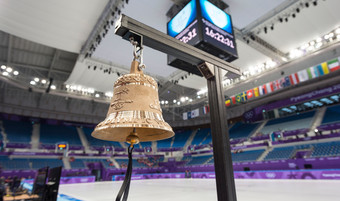Short Track
Short Track Speed Skating resembles Long Track Speed Skating, but is practiced on ice in a standard, 111.12m ice hockey rink. Two to eight competitors compete in a match that can reach speeds up to 55 to 60 km/h. What makes this sport so spectacular is the challenge to maintain high speeds while skating on a track with tight turns.
Swiss Timing and Speed Skating
Once again, Swiss Timing was a forerunner when it introduced its digital photo finish ‘Scan-O-Vision’ camera at the Short Track events of the 1992 Winter Olympics (FRA) in Albertville. Since then, the system, which identifies arrival times to mere thousandths of a second, has been both common and compulsory in Short Track.
Speed Skating is a sport that requires precision to the thousandth of a second. Swiss Timing uses a variety of means to time and communicate results. There is, of course, paper printing of all results and statistics, but scoreboards also convey real time results to the public and athletes. Each TV or radio commentator has a CIS (Commentator Information System) screen that provides direct and permanent access to all results, and the same results are broadcasted live on the Internet.
Most TV graphics are intended to inform viewers of the chronometric progress of athletes during their performance: distance between athletes, speed, intermediate times, reference times. Virtual graphics can be displayed, such as a world record line or the virtual distance between athletes, etc.
During team pursuit races, athletes wear transponders at the ankle (one at each ankle) to record the crossing of the finish line. These results are confirmed using photo finish. For more information, please click on the links below.
Scope of Swiss Timing services
Additional information about how we support this exciting winter sport is available by clicking on any of the links below.
- Timing and scoring
- On-venue results (OVR)
- Public scoreboards
- Virtual graphics
- TV graphics
- Commentator information system (CIS)
Services for Short Track
